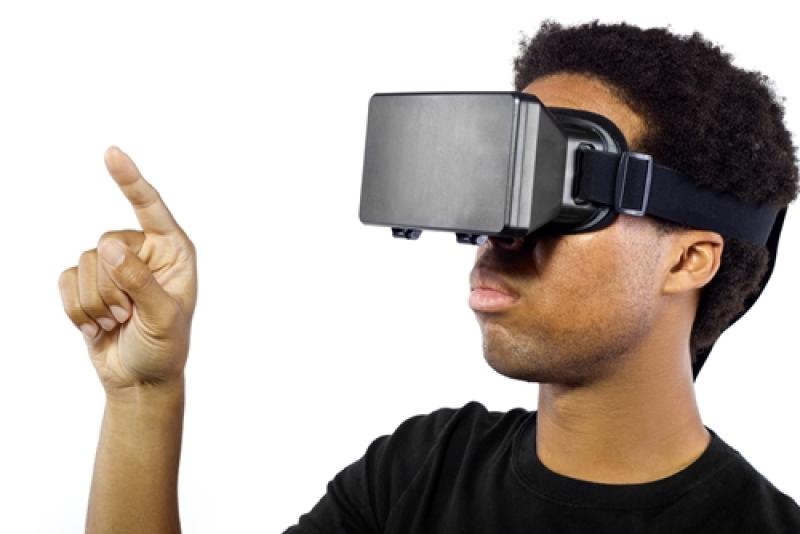
Article
How pharma marketers can use virtual reality to fight empathy drain
A meta-analysis conducted by the Massachusetts General Hospital Department of Psychiatry found that physician empathy has a noticeable effect on patient outcomes.
"Our results show that the beneficial effects of a good patient-clinician relationship on healthcare outcomes are of similar magnitude to many well-established medical treatments," said John M. Kelley, PhD, author of the report.
This comes at a time when many healthcare professionals openly lament the decline in empathy between physicians and their patients. While it's hard to quantitatively demonstrate that overt expressions of empathy positively influence patient experience, there is already enough discussion around the topic to warrant a closer look.
Dr. Ronald Epstein of the University of Rochester Medical Center explained that empathy and trust go hand-in-hand. When a patient feels heard and understood, he or she may be more willing to place trust in their physician. Without a firm foundation of open and clear communication, the relationship may be in trouble.
So what does this mean for pharmaceutical marketers? It comes down an effective appeal: If doctors increase empathy levels, they will likely increase levels of patient satisfaction, as well. It follows that a product that can aid the increase in empathy would therefore improve satisfaction, too - not to mention patient outcomes.
On its own, a pharmaceutical product cannot bolster declining physician empathy levels. However, the collateral and technology around a product may be able to do just that.
Walking in the patient's shoes
Virtual reality technology has great potential for improving empathy levels between physicians and patients. No other technology can show the point of view of another person so effectively.
According to Dr. Robert Glatter, VR technology is already being used to help train the next generation of healthcare workers. VR can simulate operations, providing a safe and consequence-free space to practice complex medical procedures. But why stop there?
Medical Marketing & Media reported on new pieces of virtual reality technology that let anyone step into the shoes of a patient with chronic illness, such as Parkinson's Disease or hearing loss. One technology transmits tremors from a Parkinson's patient to a healthy individual. This gives the second person the opportunity to experience what life is like with the condition. Another piece of software simulates what it's like to be visually and aurally impaired, limiting how much the user can see and hear.
The hope is that these kinds of technology will increase empathy levels among physicians. First-hand experience with a disease is incomparable to simply reading about it in class or speaking with a patient for a few minutes.
Behavioral science and VR
Pharmaceutical marketers often rely on the findings of behavioral science to develop effective advertising appeals. Empathy is a key player, in this arena.
For example, an advertisement for a new asthma medication might describe the relief of the first clear breath a patient takes after using the medication. That may appeal to a doctor who can imagine what it's like to live with asthma - but what if they could actually feel what it's like?
Virtual reality gives marketers the ability to show anyone what it's like to live with an illness. A VR experience could simulate the panic of being unable to breathe, then demonstrate the relief provided by the medication. A more effective advertisement would be hard to produce.
Bringing these concepts together in a display ad
Before pharmaceutical advertisers can hope to use VR demonstrations to market to doctors, they must first get their target audience interested in the idea. That's where display advertisements come to the rescue.
"VR shows doctors the patient's view."
A multi-channel marketing approach targets physicians who consume peer-reviewed or expert-curated content on mobile devices as well as in print journals. While print ads could get readers excited about VR demos, mobile ads could actually link to a mobile-optimized VR experience.
With Google Cardboard, for instance, physicians would be able to download a small VR demo directly to their phone and experience the simulation in minutes. For more complex scenarios that require additional hardware, a display ad could generate leads for traveling sales representatives.
Medical marketers can fight against the lack of empathy in physician/patient relationships, help to improve satisfaction levels and grow their own businesses all at the same time. With VR, the boundaries of reality become a little thinner - but it may just lead to a more human approach to advertising and healthcare alike.
To learn more about how a multi-channel marketing approach can increase your brand's reach, visit ELSMediaKits.com.


